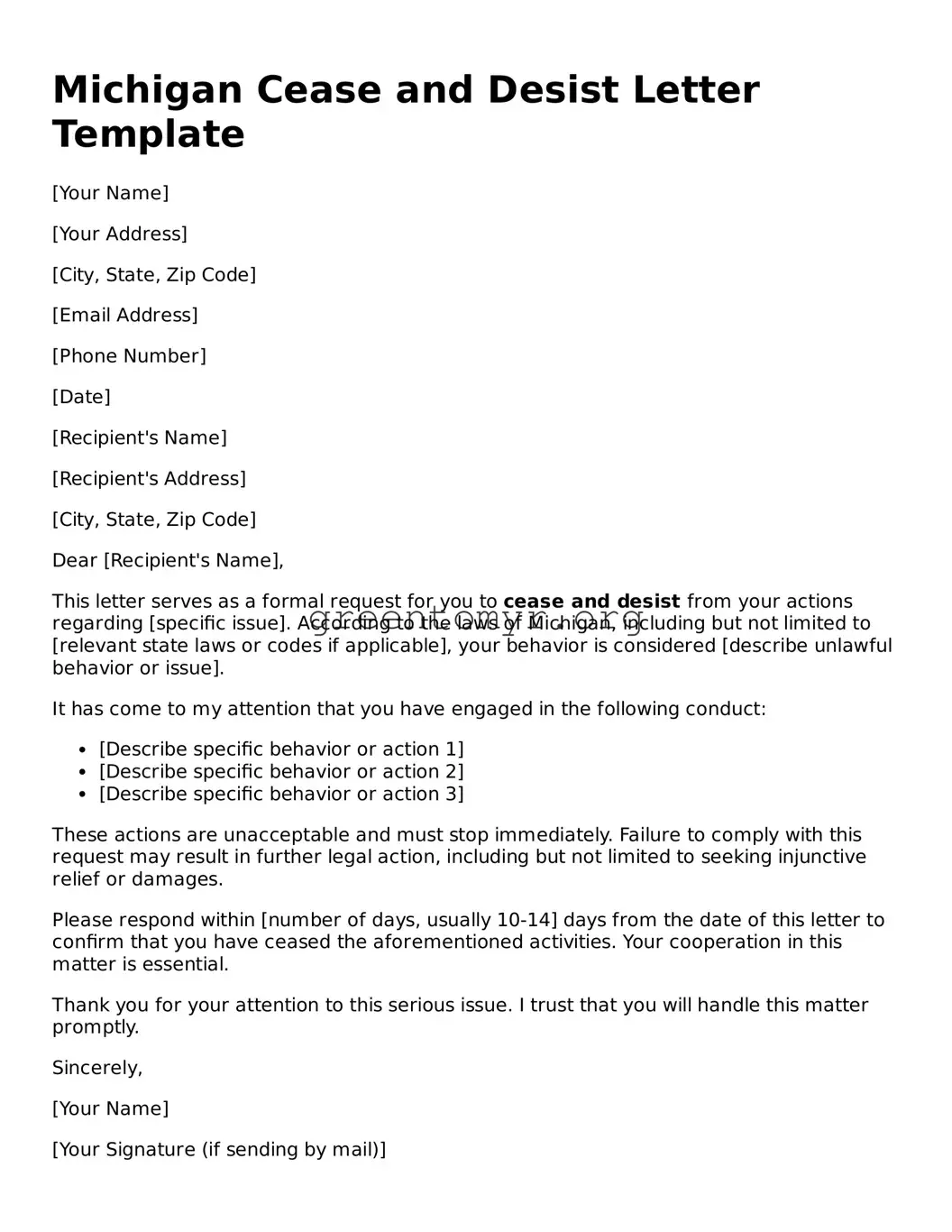What is a Cease and Desist Letter in Michigan?
A cease and desist letter is a formal request to stop a specific action that is believed to be unlawful or harmful. In Michigan, such letters are often used to address issues like copyright infringement, harassment, or defamation. They serve as a way to formally ask someone to halt their actions before taking legal action.
Who can issue a Cease and Desist Letter?
Any individual or organization can issue a cease and desist letter. This includes business owners, individuals, and legal entities. If you believe someone is violating your rights or causing harm, you can draft and send this letter as a first step to resolving the issue.
How do I write a Cease and Desist Letter?
When writing a cease and desist letter, include the following components:
-
Your name and address
-
The recipient’s name and address
-
A clear statement of the issue at hand
-
A request for them to cease the specific behavior
-
Any applicable laws or rights you believe they are violating
-
A deadline for compliance
-
Your signature
Be clear and concise. State your position calmly but assertively.
Is a Cease and Desist Letter legally binding?
No, a cease and desist letter is not legally binding. It is a formal request meant to notify the recipient of your concerns. However, if the recipient ignores the letter and continues their actions, it can strengthen your case if you decide to pursue legal action in the future.
What should I do if I receive a Cease and Desist Letter?
If you receive such a letter, review it carefully. Consider the claims being made and whether they hold merit. Consult with a legal professional to understand your rights and options. Ignoring the letter can complicate matters and may lead to further legal action.
Can I send a Cease and Desist Letter without a lawyer?
Yes, individuals can send a cease and desist letter without the help of a lawyer. However, consulting one can enhance your letter’s effectiveness. A legal professional can provide advice tailored to your situation and ensure your letter meets necessary legal standards.
What happens if the recipient ignores the Cease and Desist Letter?
If the recipient ignores your letter, consider your next steps. Options include sending a follow-up letter or pursuing legal action. Legal action could involve filing a lawsuit, but this often requires a thorough understanding of the law and potential outcomes, so consulting a lawyer is advisable.
Can a Cease and Desist Letter be contested?
Yes, the recipient can contest a cease and desist letter. They may respond with their own arguments or deny the claims made against them. If disputes arise, negotiation or mediation may be necessary, sometimes leading to a resolution without needing to go to court.
Are there specific laws that govern Cease and Desist Letters in Michigan?
While no specific laws govern cease and desist letters in Michigan, various laws regarding defamation, intellectual property, and harassment may be applicable based on the situation. It’s crucial to be informed about these laws when drafting your letter or responding to one.
